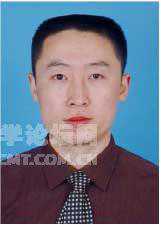Ann Surg Oncol:平滑肌肉瘤患者术后易复发
2013-02-04 Ann Surg Oncol Dxy
在2013年1月25日在线出版的《外科肿瘤学年鉴》(Annals of Surgical Oncology)杂志上,发表了美国纪念斯隆凯特琳癌症中心Samuel Singer博士等人的一项研究结果,该研究对单一原发性平滑肌肉瘤患者的存活与复发预测因素进行了确定。平滑肌肉瘤是软组织肉瘤的一种,以往曾将其预后与胃肠道间质瘤混淆。研究人员发现,肿瘤级别以及瘤体大小为疾病特异性生存率以及远端复发(DR
在2013年1月25日在线出版的《外科肿瘤学年鉴》(Annals of Surgical Oncology)杂志上,发表了美国纪念斯隆凯特琳癌症中心Samuel Singer博士等人的一项研究结果,该研究对单一原发性平滑肌肉瘤患者的存活与复发预测因素进行了确定。平滑肌肉瘤是软组织肉瘤的一种,以往曾将其预后与胃肠道间质瘤混淆。研究人员发现,肿瘤级别以及瘤体大小为疾病特异性生存率以及远端复发(DR)的显著性独立预测因素。
根据一项前瞻性数据库资料,在1982年至2006年期间,共确诊了353例可手术切除的原发性平滑肌肉瘤患者。研究人员通过多变量分析,对与疾病特异性生存率(DSS)相关的临床病理学因素进行了评价。并通过竞争风险模型生存分析,确定局部(LR)与远端复发的预测因素。
在353例患者中,有170例(48%)患者为肢端发病,144例(41%)患者为腹部/腹膜后发病,另有39例 (11%)患者为躯干部肿瘤类型。患者平均年龄为57岁(年龄范围18-88岁),平均随访时间为50个月(时长范围1-270个月)。研究人员发现,多数患者肿瘤为高级别(75%),深部发病(73%),并接受了完全切除治疗(97%);肿瘤平均大小为6.0cm(大小范围0.3-45cm)。与发病部位在肢端或躯干部相比,腹部/腹膜后部位发病与较差的长期疾病特异性生存率有关(P = 0.005)。然而,多变量分析发现,仅有高级别肿瘤以及瘤体大小为疾病特异性生存率的显著独立预测因素。整体来看,有139例(39%)患者出现复发:其中51%的患者发病部位为腹部/腹膜后,33%为肢端发病,26%为躯干部发病。局部复发相关的显著性独立预测因素为瘤体大小以及手术切缘,而远端复发相关的预测因素则为瘤体大小以及肿瘤级别。发病部位并非复发的独立性预测因素;然而,有9%的腹部/腹膜后发病患者及4%的躯干部发病患者出现后期复发(>5年)。
研究人员提醒,由于6-9%的平滑肌肉瘤患者会出现后期复发,因此对该病患者的长期随访较为重要。

Predictors of Survival and Recurrence in Primary Leiomyosarcoma
Background
Leiomyosarcoma is a soft tissue sarcoma whose outcome has historically been confounded by the inclusion of gastrointestinal stromal tumors. Thus, we sought to determine the factors that predict survival and recurrence in patients with primary leiomyosarcoma alone.
Methods
During 1982–2006, a total of 353 patients with primary resectable leiomyosarcoma were identified from a prospective database. Multivariate analysis was used to assess clinicopathologic factors for association with disease-specific survival (DSS). Competing risk survival analysis was used to determine factors predictive for local and distant recurrence.
Results
Of 353 patients, 170 (48 %) presented with extremity, 144 (41 %) with abdominal/retroperitoneal, and 39 (11 %) with truncal tumors. Median age was 57 (range, 18–88) years, and median follow-up was 50 (range, 1–270) months. Most tumors were high grade (75 %), deep (73 %), and completely resected (97 %); median size was 6.0 (range, 0.3–45) cm. Abdominal/retroperitoneal location was associated with worse long-term DSS compared to extremity or trunk (P = 0.005). However, by multivariate analysis, only high grade and size were significant independent predictors of DSS. Overall, 139 patients (39 %) had recurrence: 51 % of those with abdominal/retroperitoneal, 33 % of extremity, and 26 % of truncal disease. Significant independent predictors for local recurrence were size and margin, whereas predictors for distant recurrence were size and grade. Site was not an independent predictor of recurrence; however, late recurrence (>5 years) occurred in 9 % of abdominal/retroperitoneal and 4 % of extremity lesions.
Conclusions
Grade and size are significant independent predictors of DSS and distant recurrence. Long-term follow-up in leiomyosarcoma is important, as late recurrence continues in 6–9 % patients.
本网站所有内容来源注明为“梅斯医学”或“MedSci原创”的文字、图片和音视频资料,版权均属于梅斯医学所有。非经授权,任何媒体、网站或个人不得转载,授权转载时须注明来源为“梅斯医学”。其它来源的文章系转载文章,或“梅斯号”自媒体发布的文章,仅系出于传递更多信息之目的,本站仅负责审核内容合规,其内容不代表本站立场,本站不负责内容的准确性和版权。如果存在侵权、或不希望被转载的媒体或个人可与我们联系,我们将立即进行删除处理。
在此留言









#平滑肌#
56
#Oncol#
76